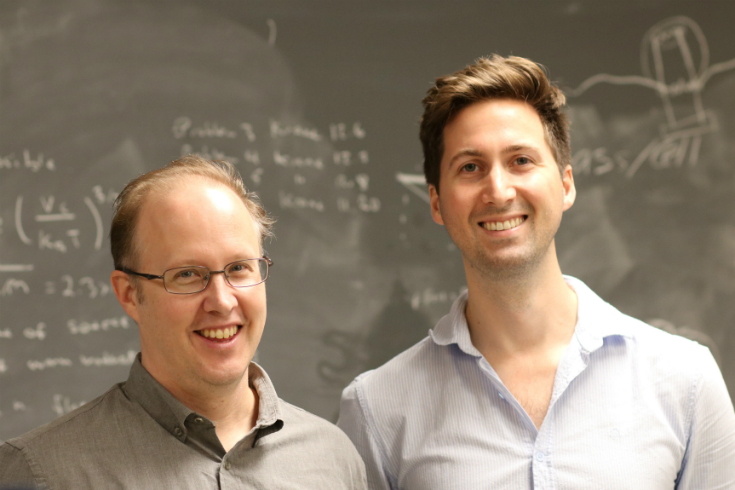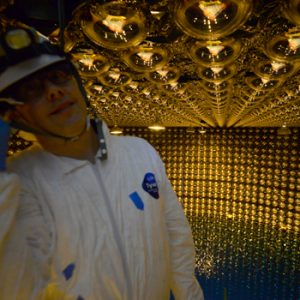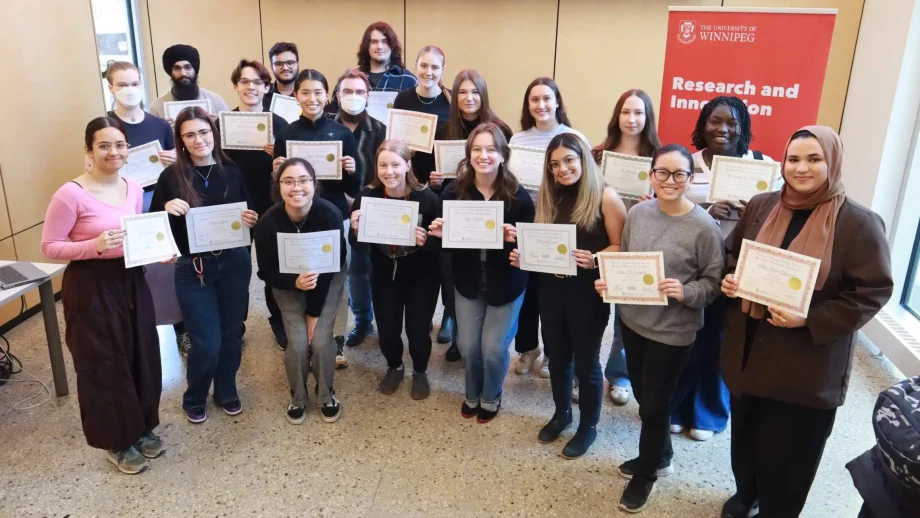For most phenomena, the laws of physics provide a symmetric description of the behaviour of matter and antimatter. However, this symmetry does not hold true universally.
UWinnipeg’s neutrino physics team, spearheaded by Dr. Blair Jamieson, is collaborating on the Tokai to Kamioka (T2K) project which has published new results in the world’s leading multi-disciplinary scientific journal, Nature.
The article, Constraint on the matter–antimatter symmetry-violating phase in neutrino oscillations, shows the strongest constraint yet on the parameter that governs the breaking of the symmetry between matter and antimatter in neutrino oscillations.
The results are a major step forward in the study of the difference between matter and antimatter; and an important step on the way to knowing whether or not neutrinos and antineutrinos behave differently.
“We have found evidence for a new source of matter anti-matter asymmetry in the fundamental particles making up our universe,” said Jamieson. “For a long time, there has been a puzzle about why our astronomical observations have indicated that the majority of the universe is made of matter instead of anti-matter.”
This new source of asymmetry, called CP-violation, has to do with the neutrino and anti-neutrino oscillating differently and could help resolve part of this puzzle. The result is at what physicists traditionally call a 3-sigma detection “evidence” level, while a 5-sigma detection is considered a “discovery”.
Using beams of muon neutrinos and muon antineutrinos, T2K has studied how these particles and antiparticles transition into electron neutrinos and electron antineutrinos, respectively.
The T2K experiment has three main experimental sites: the beam (J-PARC), the near detector (ND280), and the far-detector (Super-Kamiokande). The near and far site are separated by 295 kilometres.
The T2K UWinnipeg team, which includes Dr. John Walker and UWinnipeg graduate students Matt Stubbs, and Shahin Ahmadi, is involved in research with the far detector, Super-Kamiokande.
Jamieson was involved in the refurbishment work in the summer of 2018, to allow the detector to run in a new configuration with Gd loading. The group is making detailed studies of the Super-K’s ultra-sensitive light detection photomultiplier tubes (PMTs). These studies will provide detailed maps of the PMT efficiency, gain, and timing response as a function of applied magnetic field.
In the future, the UWinnipeg team will be involved in the new Hyper-Kamiokande detector, whose goal will be to reach the 5-sigma discovery level for CP-violation of neutrinos. Funding for this more than $500 million experiment was approved in Japan, in January 2020.
In Canada, the Canadian neutrino physics consortium includes members from UWinnipeg, UVic, TRIUMF, Regina, Carleton, York and Toronto. Together, they have prepared a joint Canada Foundation for Innovation (CFI) proposal for $10 million to build the Intermediate distance Water Cherenkov (IWCD). They have been advocating for a new IWCD, needed to reduce systematic uncertainties in the more sensitive future measurements.
The Canadian consortium is hopeful that their CFI proposal to produce multi-PMT modules as sensitive light sensors for the IWCD, will be approved later this summer. UWinnipeg will be involved preparing the PMTs and testing them before final assembly, and will also be involved in the testing of electronics.
The construction of this new detector will happen in stages, with initial tests in the beam at CERN in 2022 and 2023, and installation in a new facility in Japan in 2026, in time for the start of Hyper-K in 2027.






